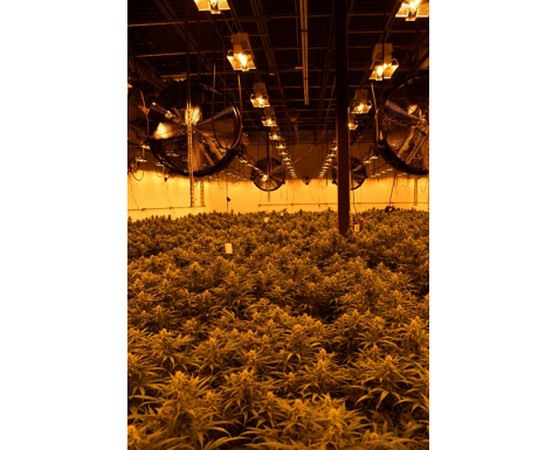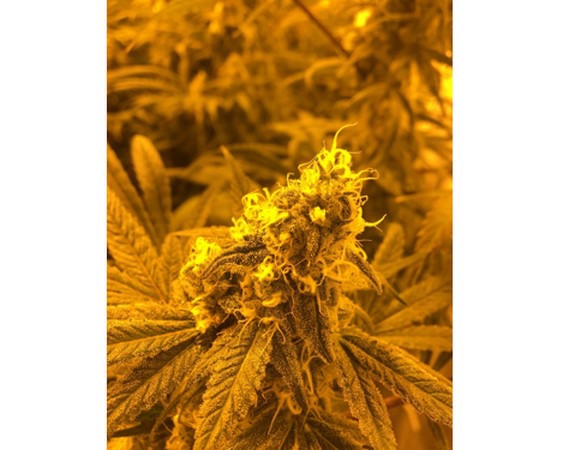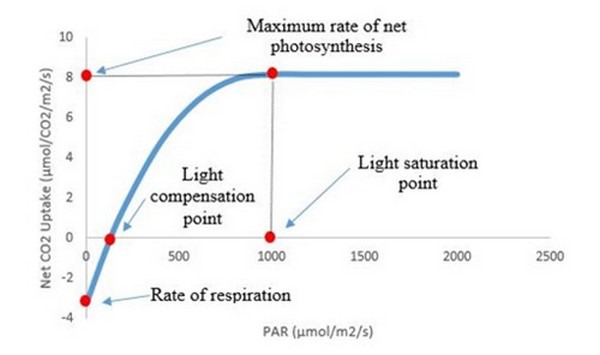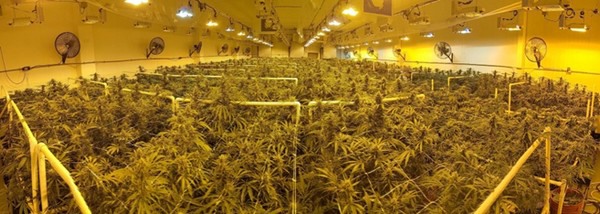Cannabis, like every other plant, requires light for optimum growth and development, but the three different aspects of light: duration, quantity, and quality, each have a significant influence on growth.
A plant under natural conditions receives light from the sun; the duration, amount, and quality greatly depend on the season of the year, hour of the day, geographical location, and weather. If this is true for plants grown outdoors, cannabis grown indoors is not affected the same way by natural conditions, including natural lighting and climate.
As indoor growers can manage lighting in many ways, with technologies growing at a fast pace, it is a great idea to remind ourselves of the main principles behind lighting for cannabis crops, and Premier Tech is here to help.
Let’s focus here on cannabis grown indoors, as outdoor growing has its own set of rules and challenges.
Light duration for indoor cannabis
If we put aside auto-flowering varieties of Cannabis rudealis, cannabis is a “short-day plant”, which means it will switch to flowering when days are shorter than 12 hours (or that it gets 12 hours of uninterrupted darkness). With that said, a grower can easily set the photoperiod of the crop to manage the growth cycle.
Source of all photos: Premier Tech
Each variety has its preferences, and every grower wants a specific result. Shorter vegetative time will make for shorter crops, but more harvests in a year. A longer vegetative time will make for taller crops with higher yields but will obviously take more time. There is no good recipe, as a variety will thrive according to certain variables, and growers will often prefer working with their preferred cultivar and optimizing their grow by playing with lighting schedules. The correct balance between light and darkness hours will eventually be brought down to approximately 12-12 (varieties have different reactions to this balance), which is the schedule to which pretty much all varieties will begin their flowering. As humans, plants have a circadian cycle and tend to prefer 24-hour schedules, so one should avoid uninterrupted lighting in the vegetative phase to push growth, hence avoiding problems. All in all, most growers will use longer days in the vegetative phase.
Light quantity or intensity
Plants in general use light as a source of energy for photosynthesis. The term photosynthesis refers to the reaction between carbon dioxide and water in the presence of light to produce carbohydrates and oxygen. The rate of this process is highly dependent on the light quantity; the photosynthesis rate is higher as the Photosynthetic Active Radiation (PAR) increases. The carbohydrates produced during photosynthesis are stored and used by the plant as a food source. Each plant species starts the process of photosynthesis at different light energy levels, which is called the light compensation point. This point starts when light energy is sufficient for photosynthetic activity to produce more oxygen than is required by the plant for respiration. Likewise, the release of carbon dioxide through respiration by the plant must be less than the total carbon dioxide used by the plant for photosynthesis. In other words, the net photosynthesis (Eq. 1) is zero:
Net Photosynthesis = Photosynthesis – Respiration (1)
More light generally equates to higher levels of photosynthesis. However, as the light intensity increases, the photosynthetic rate eventually reaches a maximum point. This point where the light intensity does not increase the photosynthesis rate is called the light saturation point. When this point is reached, the photosynthesis rate curve becomes flat (Figure 1).
Figure 1. Graph of the light compensation point and the light saturation point
The difficulty for cannabis is that its light saturation point has not yet been determined. We know that cannabis wants and thrives with a lot of light, as it can tolerate a very high DLI (Daily Light Integral). What we know for sure: not enough light will impact yield negatively, and too much light could mean a waste of energy, impacting your return of investment. The goal then is to measure and maintain consistent lighting throughout the cycle, to get predictable results. Testing the light quantity from batch to batch can help improve the results for the grown cultivar.
Light quality
Light quality refers to the color or wavelength. The sun emits wavelengths between 280 and 2800 nm (97% of total spectral distribution). They are divided into three regions: Ultraviolet (100-380 nm), visible light (380-780 nm) and infrared (700-3000 nm). The highest energy corresponds to the lowest wavelengths; ultraviolet has higher energy than red. We as humans see wavelengths between 380-770 nm; this range is called visible light. Visible light is divided into: violet (380-430 nm), blue (430-500 nm), green (500-570 nm), yellow (570-590 nm), orange (590-630 nm) and red (630-770). On the other hand, plants photosynthesize between 400-700 nm; this range is known as Photosynthetic Active Radiation (PAR). Chlorophyll, the green pigment in leaves responsible for absorbing the PAR, has two peaks of absorption: blue and red light. Leaves absorb little green and reflect it back; this is why we see the green color of the leaves.
In general, different colors have different effects on plants:
- Ultraviolet light: Ultraviolet light causes DNA damage, reduces photosynthesis rate, flowering and pollination decrease, and seed development is affected. Ultraviolet A (a subcategory of ultraviolet light) can cause plant elongation.
- Blue light: It corresponds to one of the absorption peaks; therefore, the photosynthetic process is more efficient when there is blue light. Blue light is responsible for vegetative and leaf growth and is important for seedlings and young plants because it helps reduce plant stretching.
- Red light: This is the other peak of light absorption by the leaves. Phytochrome (a photoreceptor) within the leaves is more sensitive to and responds to red light. This light is important in the regulation of flowering and fruiting. It also helps increase stem diameter and promotes branching.
- Far red light: This light can cause plant elongation and trigger flowering in long-day plants (not cannabis).
- Red: Far red ratio: Plant elongation results when this ratio is low. In other words, plants are more exposed to far red than red. In nature, we see this phenomenon when plants are shaded by neighbouring plants; the shaded plants receive a higher ratio of far red light and tend to grow taller to reach more light. This can become a problem in greenhouses where the plants are too close to each other.
Light Emitting Diodes (LED) emit a specific wavelength. The manufacturer can produce these diodes in a specific color/wavelength (monochromatic) that a customer requires. It obviously gives more flexibility for growers, which explain their popularity.
Benefits of proper lighting on cannabis quality
Duration, quantity and quality of light is important for cannabis (as for all plants), as it improves the:
- Vegetative growth,
- Crop’s uniformity,
- Plants’ strength and structure,
- Crop’s predictability and schedule.
So, bigger and stronger plants, for higher yields. But does better lighting also have an impact on the flowers’ quality? As we all know, the chemical composition of the flower is of interest for the growers and end users.
A 2018 study (Magagnini et al.) demonstrates that the photoperiod (light duration), light quantity and quality are all essential components of a successful grow. Some of their conclusions pointed that a higher lighting intensity (compared to natural light) resulted in increased concentrations of THC, CBC and CBN. They also pointed out that the plant morphology can be manipulated with the light spectrum, affecting the accumulation of different cannabinoids especially by using LED technology. For example, the study suggests that UV-A and blue wavelengths may act synergistically to induce CBG accumulation in cannabis flowers, CBG being the precursor of other cannabinoids.
Appropriate lighting has numerous benefits for all plants, but it also shows to improve the quality of the harvest. Growing better cannabis takes more than a good control of lighting, but it may be a crucial part of reaching the next level with your future crops.
For more information:
Premier Tech
1, avenue Premier
Rivière-du-Loup (Québec)
Canada G5R 6C1
T: +1 418 867-8883
Toll free: +1 855 867-5407
info@pthorticulture.com
pthorticulture.com
